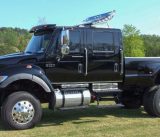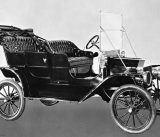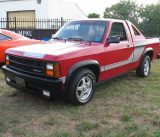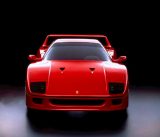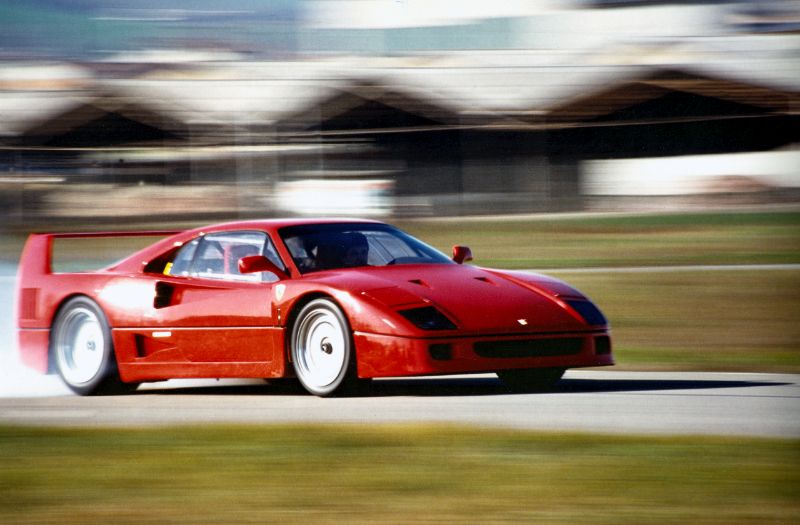
The Ferrari F40 was produced between 1987 and 1992, with a total of 1,311 units produced during that time. The F40 sports car has rear-wheel drive with a mid-engine position. It was the successor for the Ferrari 288 GTO, and its design celebrated the fortieth anniversary of the automaker. The F40 also bears the honor of being the last auto that Enzo Ferrari personally approved. When the F40 was released in 1987, it was the most powerful, most expensive, and quickest vehicle from the automaker. Despite its production numbers, Ferrari originally planned that there would only be a production run of 399 units.
Styling
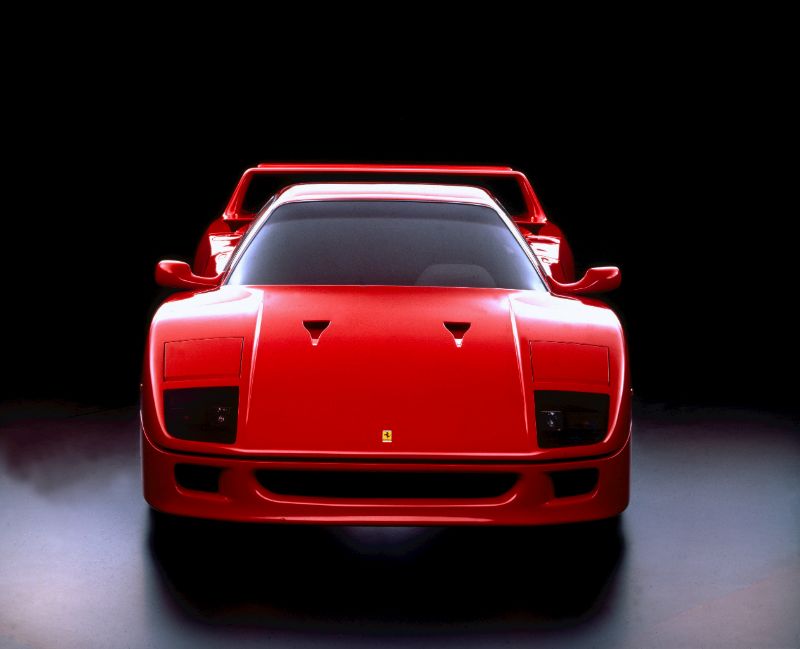
Ferrari F40
To create the F40, the engineers spent a year adjusting the 288 GTO’s platform as well as styling in its then-modern wind tunnel. This led to a deep nose cone and minimal front surface area. Other aerodynamic aspects of the design included ground-breaking carbon-Kevlar for the tub and panels and NACA ducts that handle cooling and airflow without the drag associated with standard vents. When the aerodynamic refinement was complete, the new Ferrari F40 bore little resemblance to its predecessor. The F40 had a lean form with simple aesthetics. There was also a giant wing that may or may not have helped when driving at high speeds but had barely any horizontal angle. The spoiler delivered dual vertical stabilizers along the far corners of the F40.
Inside the F40
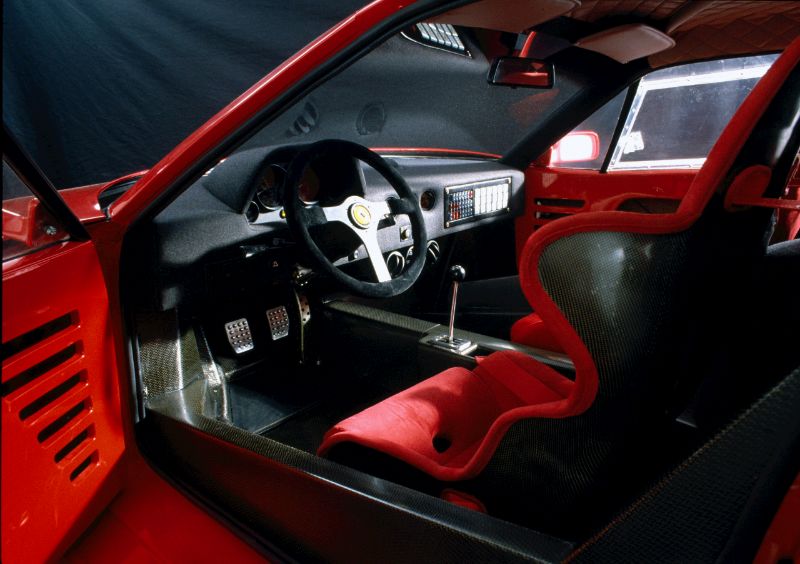
F40 Interior
Inside the 1987 Ferrari F40, you will notice a simpler racecar construction than what you would expect today. Ferrari used NASA-spec green industrial glue and a felt-like cloth dashboard. Underneath this felt, the basic structure of the F40 is essentially a flat dash from a rally car as well as a crash cage. There are also some air vents sneaking through this cloth. The cabin grounds out with a three-spoke steering wheel made of aluminum.
Under the Hood

The powertrain in the 1987 F40 was the first 2.9-liter V8 with a parallel twin-turbo design. That design used two IHI turbochargers that operated simultaneously, so each gave a boost for each of the 90-degree engine banks. This parallel turbo design helped define the driving style of the F40. When the Ferrari F40 launched, it only had a very slight turbo lag. Overall, the engine delivered 471 horsepower and was able to reach 201 mph. It only needed 3.8 seconds to reach 60 mph.
Pricing
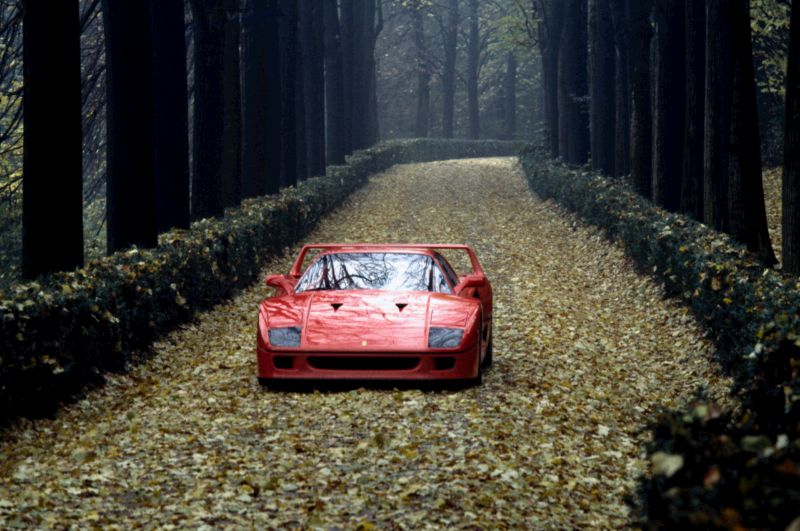
At its launch, the 1987 Ferrari F40 came with a hefty tag: $400,000 when new. The maintenance requirements associated with upkeep will vary slightly depending on if you get a version with the European or U.S. specs, with the U.S. version costing a little less. You are much more likely to find a Euro-spec version, however, since only 213 units of the F40’s production were made for the U.S. In modern years, the F40 has sold for very high sums of money. In 2015, a 1992 Ferrari F40 sold at auction for $1.22 million in Nürburgring, Germany. That figure was the highest to date, but past sales and auctions had been close to $1 million if not higher.

